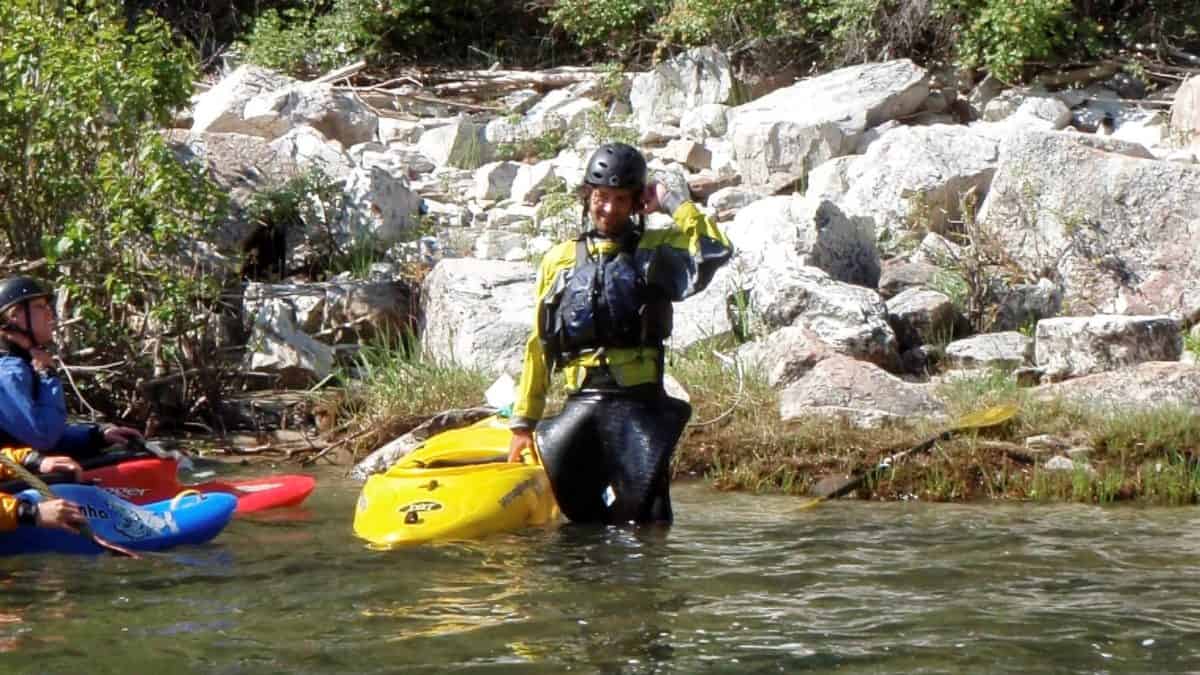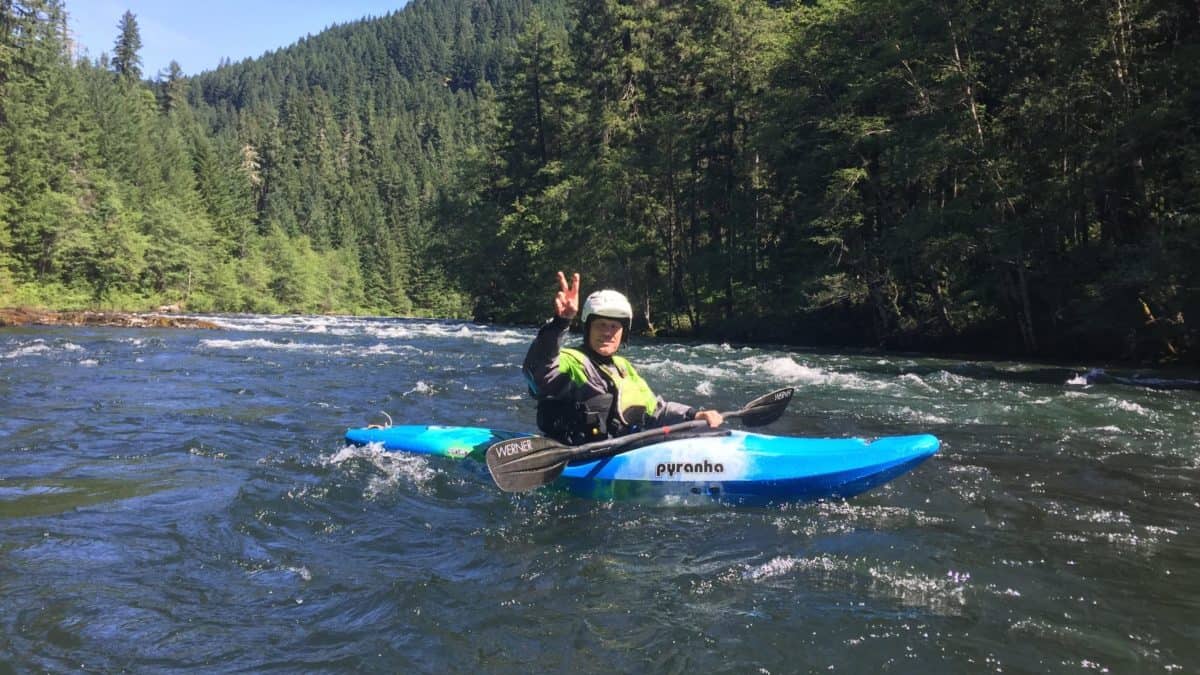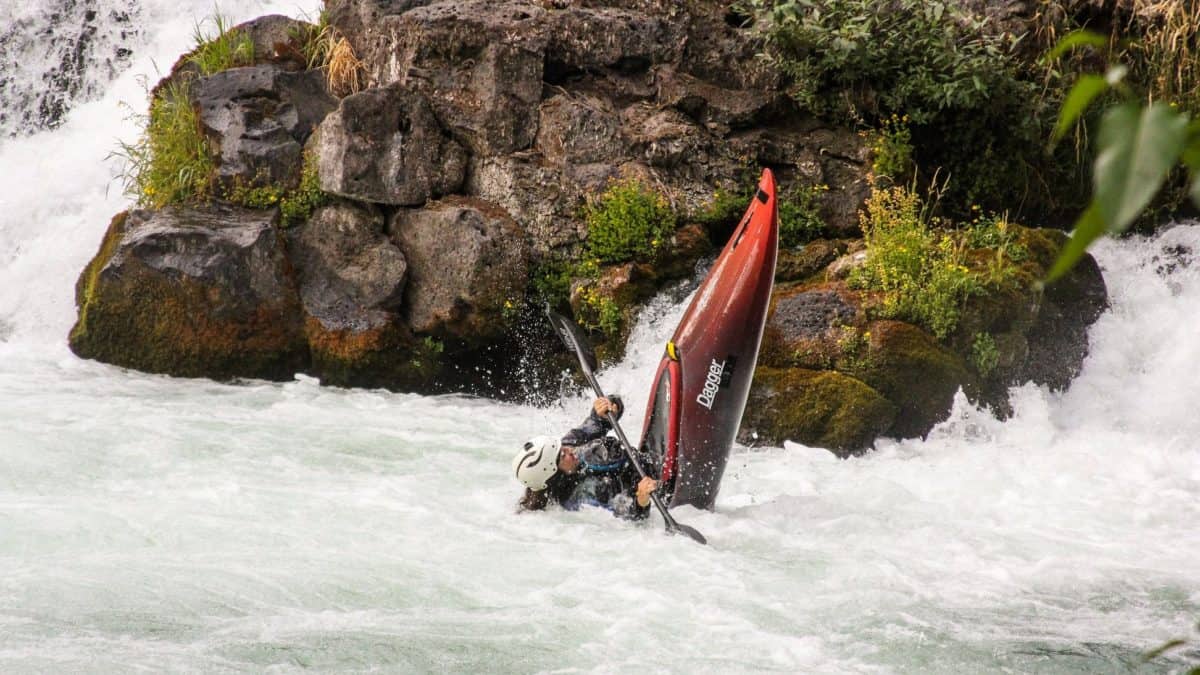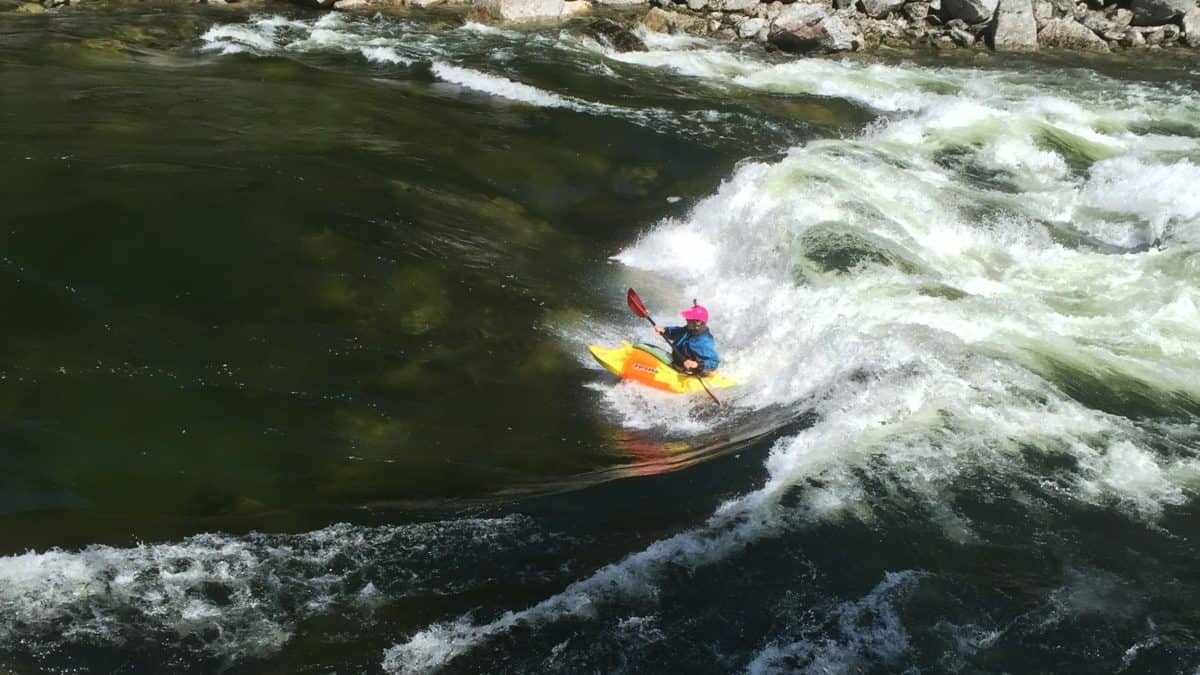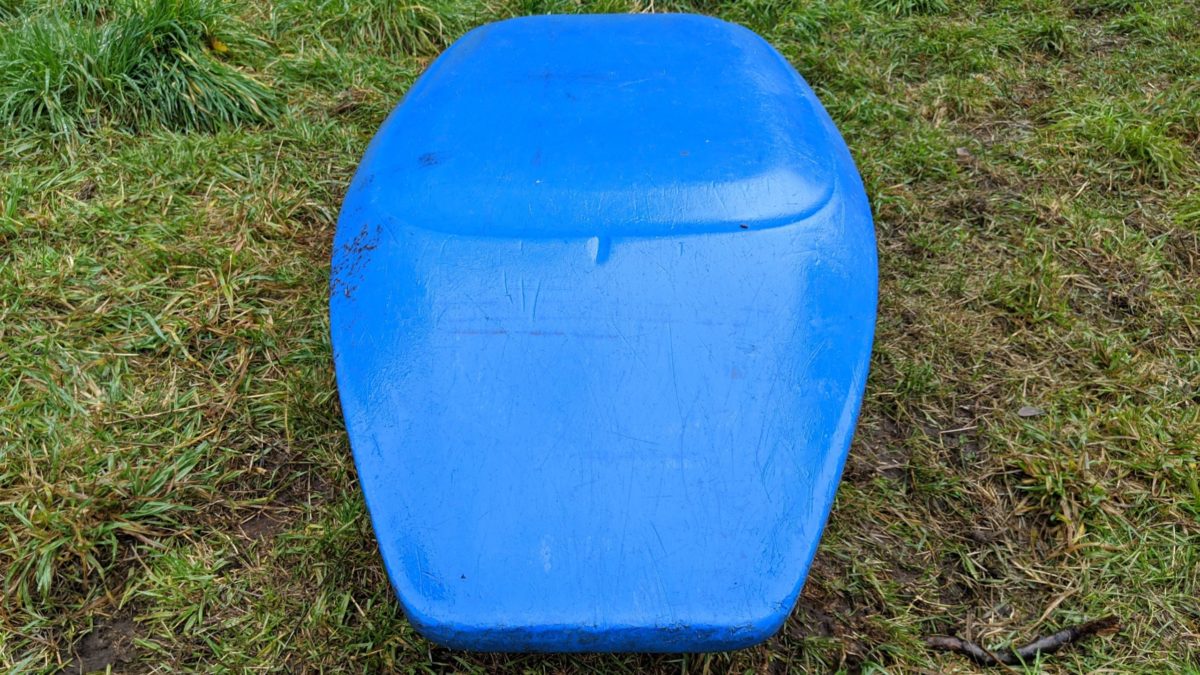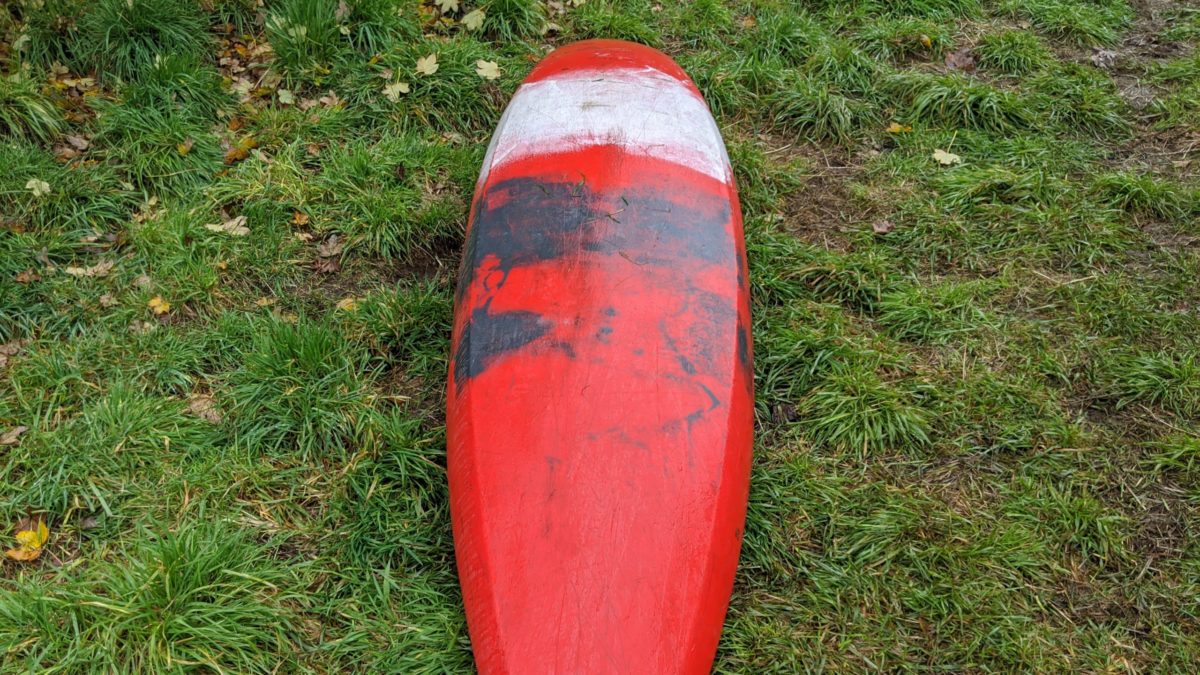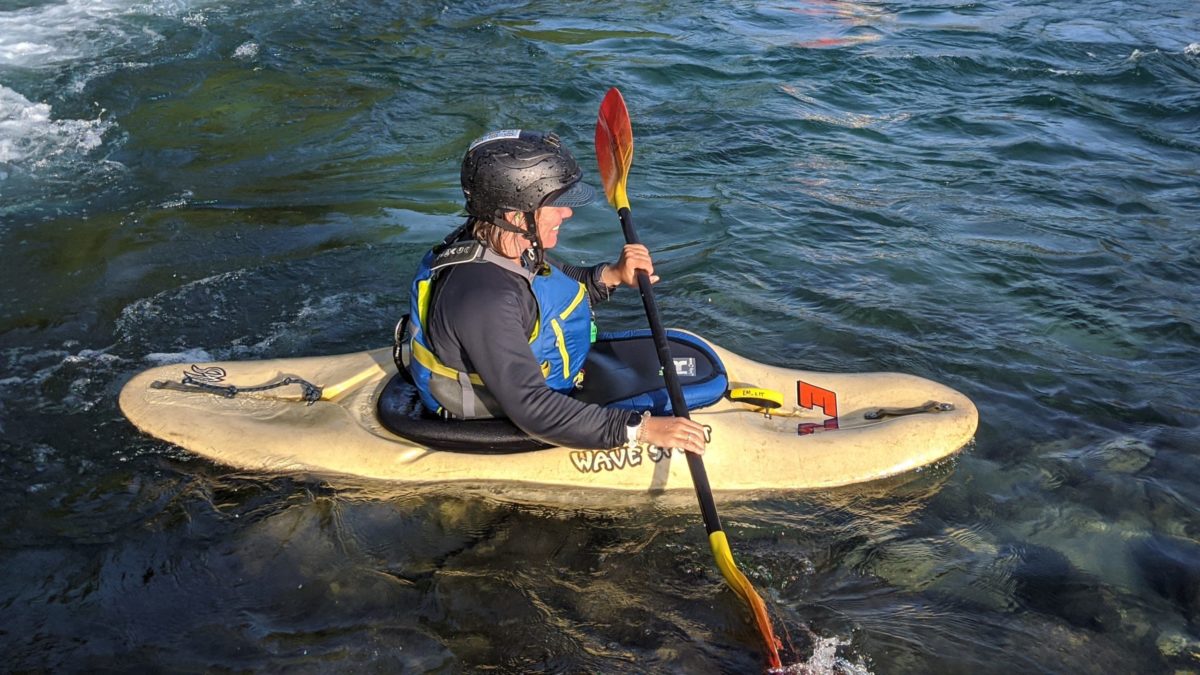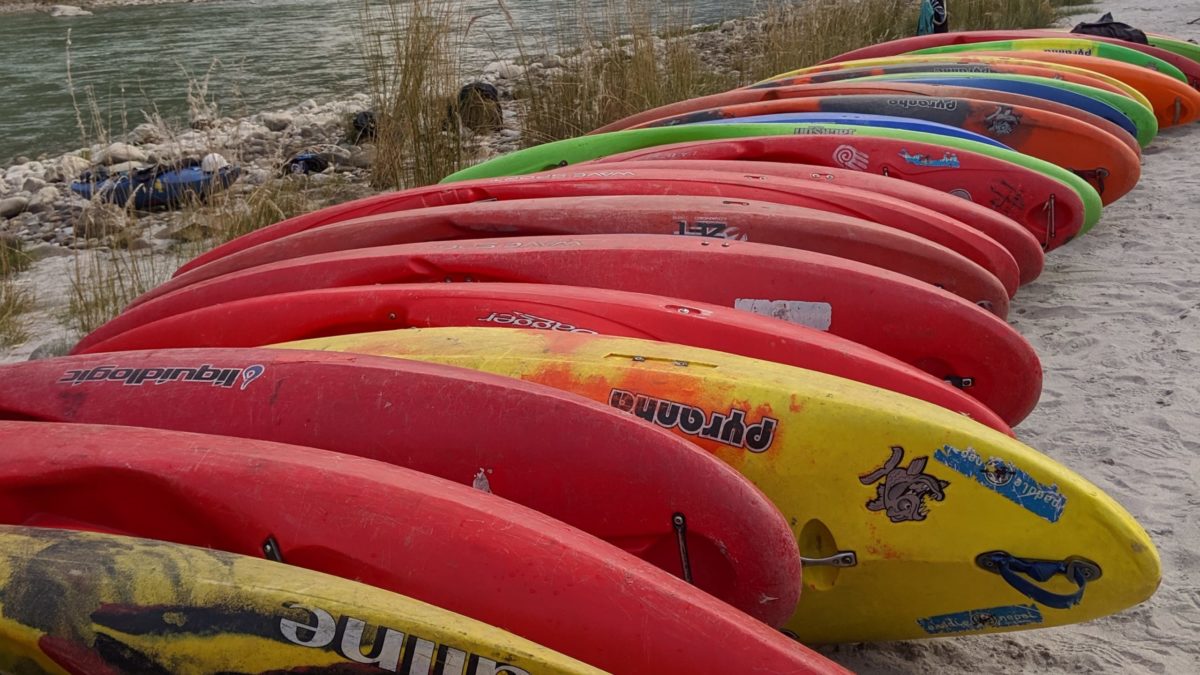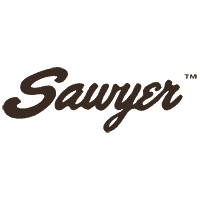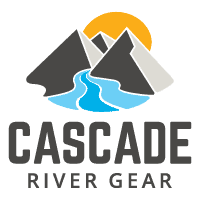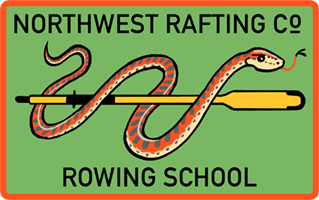Buying Your First Whitewater Kayak
Getting into whitewater kayaking can be overwhelming. There is a lot of gear to purchase and many options. A big, and very important piece of gear is your first whitewater kayak. But which one? The best, flashiest kayak is not necessarily great for learning. Here is some information to help make an informed decision when buying your first whitewater kayak.
Types of whitewater kayaks
In short, the types of whitewater kayaks can be characterized by length, volume and stability. The speed and maneuverability of your kayak depends on the length. The volume is measured by how many gallons of water fit in a kayak. There are a few factors that affect stability which will be discussed further below. The different types for beginners can be broken down into three categories:
Creek Boats
Creek boats are between 7.5 and 10 feet long and are your biggest option. They have a rounded bow and stern, with evenly distributed volume. Sitting highest in the water, they float over waves more than other boats. Beginners might feel more stable starting in a creek boat. Due to the length, these boats generally travel the fastest downriver and are the easiest and most forgiving.
Slicey Boats
Slicey boats are between 7 and 9 feet long. There is more volume in the bow than the stern. The stern is flat or concave, allowing for advanced paddlers to maneuver it under the water and do a trick called a stern squirt. In my opinion, these boats are the most versatile. They can do everything from smoothly surf waves to run hard, steep rapids. Because they are designed to be playful, they catch the water easily and flip unsuspecting kayakers. Depending on the length, they are as fast or slightly slower than creek boats.
Playboat
Playboats are the shortest type of kayak, ranging between 6 and 8 feet, and have the least volume. The bow and stern are shaped to allow advanced paddlers to do a variety of tricks like cartwheels, bow stalls and loops. Many kayakers keep a playboat in their fleet for surfing river waves. Longer playboats are great for your first whitewater kayak because they are less stable. They force new paddlers to learn how to keep from flipping over using a brace or, when that fails, practice their rolls. Short playboats are the slowest kayak and tend to go through waves rather than over them.
Whitewater kayak hull types
There are two hull types for whitewater kayaks. Beginner kayakers should try both hulls to get comfortable with the different styles.
Planing Hull
The bottom of these kayaks are flat and the sides meet the bottom with sharp, defined edges. They are meant to be paddled with speed on top of the water and turn side to side easily. However, they are a bit harder to paddle in a straight line. The flat bottom provides more stability and surfs better than a displacement hull.
Displacement Hull
This is the original hull type, the bottom of the kayak forming a smooth rounded semi circle. The edges are much less obvious. A rounded hull sits deeper in the water and moves through it, plowing through waves. As the kayak displaces water, it will travel in a straight line easier than those with a planing hull.
Easiest whitewater kayaks to roll
Some people say the kayak you learn in is the easiest to roll. For example, I learned how to kayak in a Jackson 2Fun, a play boat. The first time I got in a creek boat, I had trouble with my roll because it was different. Other people say that creek boats are easier to roll because they are shaped more like a barrel.
The key is to have a good roll, not have a kayak that is easy to roll. Try going to a pool roll session with some friends and practice rolling many different types of kayaks. Your roll will improve and then it will not matter what type of kayak you are trying to roll.
Choose an appropriately sized whitewater kayak
Learning how to kayak will be much easier using a kayak that fits you well. The size of a kayak is not determined by its length. There are small, medium, and large kayaks within different models. These sizes have different weight ranges appropriate for them. Being too heavy for a kayak causes it sit too low in the water. On the other hand, being too light makes the kayak feel overwhelming and hard to maneuver.
Once you choose a kayak with an appropriate weight range, the outfitting might need to be adjusted. Most kayaks have foot and thigh braces, back bands, and hip padding that can be moved. Paddlers want to be snug in their boat but not trapped. Your feet should be able to press against the foot brace and your low back supported by the back band. Because the boat is largely controlled by your hips, there should be enough padding on either side of your hips so you can wiggle the boat side to side. In addition, make sure your knees are comfortably pressed against the side of the boat or in the thigh braces.
Do not break the bank
The last thing I want to mention when choosing a kayak to buy is the price. New kayaks are going to cost around $700-$1200. However, a beginner kayaker does not need a new kayak! Save your money and search around for a used one. Kayaks are constantly being sold on Facebook paddling groups and will save you a lot of money.
Happy paddling!
